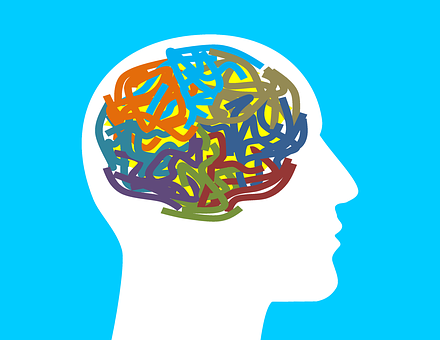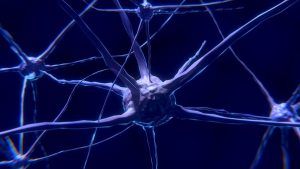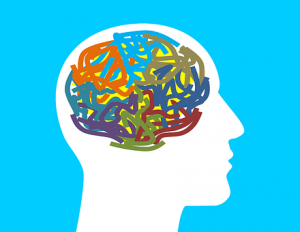
As promised we are now continuing in our conversation about maintaining health in early recovery, and we are going to answer the question of if there is an imbalance in the addicts brain that is restored to equilibrium by their drug of choice? The answer is yes.
Re-balancing the brain through amino acid supplementation is a way to begin from above downward. As mentioned before when a client is beginning his or her recovery journey living without the drug can leave a physiological void or depletion in the neurochemistry. Restoring the necessary amino acids to promote healthy levels of neurotransmitter production can restore a sense of internal well-being.
“Neurotransmitters are made from amino acids, the building blocks of protein. Several key neurotransmitters are particularly affected by and involved in addiction these neurochemicals need to be balanced to their normal state in order for the recovering person to be free of abstinence symptoms such as cravings, anxiety, irritability, and depression.”[i]
“The following amino acids help produce the neurotransmitters most often involved in addiction:

Phenylalanine is an essential amino acid. Because it can cross the blood brain barrier, it can have a direct effect on brain chemistry. Once in the body, phenylalanine can be converted into another amino acid, tyrosine, which in turn is used to synthesize two key neurotransmitters that promote alertness: Dopamine and norepinephrine. Because of its relationship to the action of the central nervous system, this amino acid can elevate mood, decrease pain and aid in memory and learning, and suppress the appetite. [ii]
DL-Phenylalanine as mentioned above raises two catecholamine’s dopamine and norepinephrine. D- Phenylalanine is responsible for the pain killer effect and L-Phenylalanine is responsible for the alertness. This can be helpful in easing apathetic depression, lack of energy, drive, focus and concentration and is helpful in ADD. This can be important for clients who used caffeine, cocaine, methamphetamines, marijuana, chocolates and sweets as well as other stimulants for a sense of alertness, energy, and drive.[iii]
D-Phenylalanine – raises endorphins, and can be helpful for clients who have used starch, chocolate, marijuana, alcohol, heroine, caffeine and tobacco as pain relief or for pleasure.
The second amino acid that has a positive effect on the catecholamine’s in the brain is L-Tyrosine. This is an amino acid that works very similarly to phenylalanine raising mood and catecholamine’s, however this may have more of an effect on alertness than on pain management. It is also a building block for thyroid hormone. [iv] It is useful for clients addicted to the same substances as named above. [v] It is important to include B6 for absorption for this amino acid. [vi]
Tryptophan or 5- HTP– is an essential amino acid that is necessary for the production of niacin which is important for alcoholics. But it is used by the brain to produce serotonin that helps combat depression and insomnia and to stabilize moods. [vii]
Because it helps to produce serotonin it can alleviate the symptoms of low serotonin which include negativity, depression, seasonal affective disorder, worry, anxiety, obsessive thoughts, and irritability. It is useful for clients who have used sweets, starches, tobacco, chocolate, ecstasy, marijuana, alcohol for its calming effect. Because of it raising serotonin levels which promote the production of melatonin it also helps with sleep. [viii]
L-Glutamine- L-Glutamine is the most abundant free amino acid found in muscles of the body. Because it can readily pass the blood –brain barrier, it is known as brain fuel. It produces GABA in the brain that is needed for brain function. It also enhances antioxidant protection. It reduces sugar cravings and the desire for alcohol. It can produce a sense of stability and groundedness and promote healthy blood sugar balance. It also is helpful in healing the gut. [ix], [x]
Gaba or Gamma-Aminobutyric Acid – is an amino acid that acts as a neurotransmitter in the central nervous system. It is essential for brain metabolism, aiding in proper brain function. Gaba decreases nerve activity and prevents nerve cells from over-firing. It prevents anxiety and stress related messages from reaching the motor centers of the brain by occupying their receptor sites. This calms the body. [xi] This amino acid is helpful for clients who use marijuana, alcohol, sweets, starch, and tobacco for its calming effects.
Taurine –Is a conditional essential amino acids which means that in times of stress the body may not be able to manufacture enough of this amino acid. It is a calming amino acid which is a key component of bile, is needed for the digestion of fats, and the metabolism of fat soluble vitamins A D E and K. It is vital for the proper utilization of sodium, potassium, calcium and magnesium. Taurine also enhances the effect of insulin helping the body to manage blood sugar more effectively. This is beneficial for the Alcoholic who because of use has been unable to metabolize fats and fat soluble vitamins and therefore is depleted in this way.
There are important precautions when using amino acids: DLPA, L- Tyrosine or Phenylalanine should be avoided if you have high blood pressure, migraine headaches, bipolar tendencies, overactive thyroid or hoshimotos, and melanoma. L-Tryptophan and 5HTP should be avoided if you have Asthma, or carcinoid tumor. 5-htp only should be avoided if you have excessively high cortisol output. Gaba should be avoided if you have low blood pressure. L-Glutamine should be avoided if you have bipolar tendencies, or have lymphatic cancer.[xii]
Julia Ross, a pioneering author in the area of amino acid supplementation, identifies that “a common mistake when recommending amino acids to clients is rooted in the misunderstanding that amino acids, unlike the usual prescription tablet or capsule, is highly soluble in food. In fact, the protein content of a meal will compete with the supplemental amino acids for entry into the brain. It is best, therefore, to take amino acids between or before meals. The cardinal rule in the use of amino acids: take on an empty stomach with cold fluids.”[xiii]

This can be a logical first step in helping a client feel better and be able to focus and engage in treatment as they move through withdrawal. It is also important in a client maintaining their recovery for time to come, while some only remain on the supportive therapy for a time others continue it indefinitely.
There are many other nutrients that simultaneously affect all systems in the body; fat is one of those nutrients. It will provide a source of energy for the whole body while replenishing the brain which is often a need of someone whose neurotransmitters have been depleted through use.
This is an illustration of holism. Within our culture it is easy to over simplify and say that this substance is good for a particular issue. But from a Naturopathic perspective many remedies are good for the whole body and work on many systems. As with food sources, what is good for a part is often needed and beneficial to the whole simultaneously; what is good for the brain is good for the body.
As we continue in this conversation we will look at different modalities that support the body and give it the resources to heal as appropriate for a client in early recovery. While some of these modalities and concepts may be new, perhaps you will be familiar with some. The way a Naturopath uses these modalities is always trying give a client resources and tools that allow them to return or create a way of living that supports a greater sense of wellbeing and health.
For Part VI click here!
___________________________
References
[i]. Miller, Merlene, David Miller. Staying Clean & Sober: Complimentary and Natural Strategies for healing the addicted brain. Woodland publishing. Utah.2008:67
[ii]. Balch, Phyllis A. A prescription for natural healing. Penguin Group. New York. 2010:62-63
[iii]. Ross, Julia. A clean and Sober Brain: Using Amino Acids and A pro Recovery Diet to transform the addictive brain. Virginia. 2012.
[iv]. Miller, Merlene, David Miller. Staying Clean & Sober: Complimentary and Natural Strategies for healing the addicted brain. Woodland publishing. Utah.2008:67
[v]. Ross, Julia. A clean and Sober Brain: Using Amino Acids and A pro Recovery Diet to transform the addictive brain. Virginia. 2012.
[vi]. Miller, Merlene, David Miller. Staying Clean & Sober: Complimentary and Natural Strategies for healing the addicted brain. Woodland publishing. Utah.2008:67
[vii]. Balch, Phyllis A. A prescription for natural healing. Penguin Group. New York. 2010:62-63
[viii]. Ross, Julia. A clean and Sober Brain: Using Amino Acids and A pro Recovery Diet to transform the addictive brain. Virginia. 2012.
[ix]. Ross, Julia. A clean and Sober Brain: Using Amino Acids and A pro Recovery Diet to transform the addictive brain. Virginia. 2012.
[x]. Balch, Phyllis A. A prescription for natural healing. Penguin Group. New York. 2010:62-63
[xi]. Balch, Phyllis A. A prescription for natural healing. Penguin Group. New York. 2010:62-63
[xii]. Ross, Julia The mood Cure. Penguin. 2004.
[xiii]. Ross, Julia and Forest Tennant. “Amino acids and Diet in Pain management.” Practical Pain Management. 2008.
[xiv]. Miller, Merlene, David Miller. Staying Clean & Sober: Complimentary and Natural Strategies for healing the addicted brain. Woodland publishing. Utah.2008:67